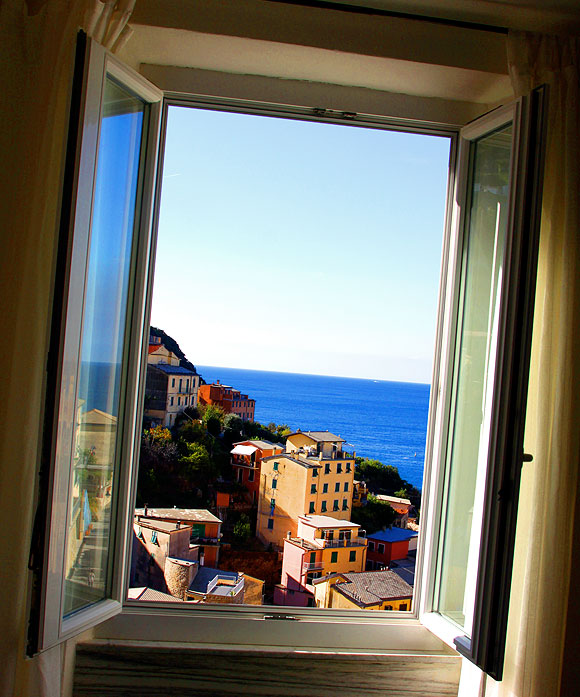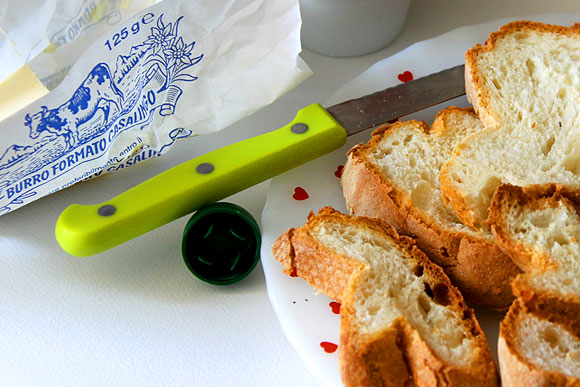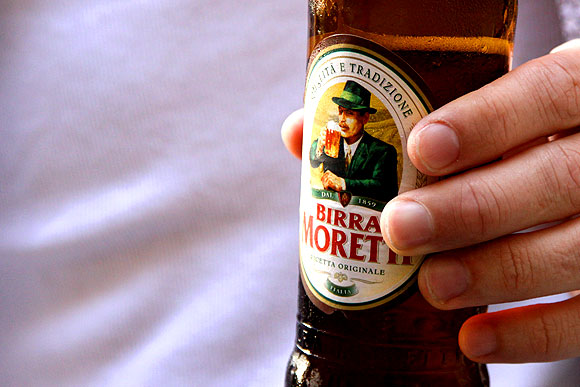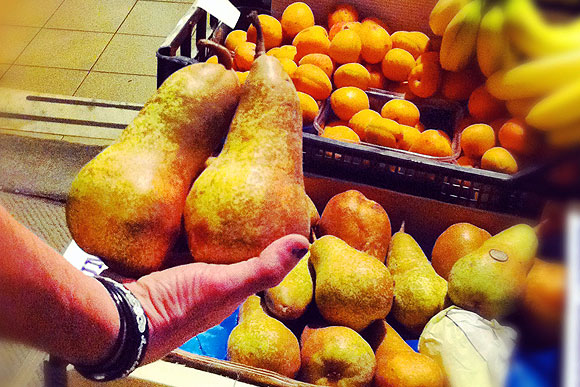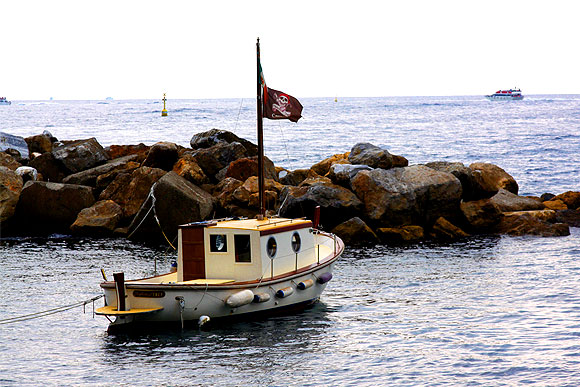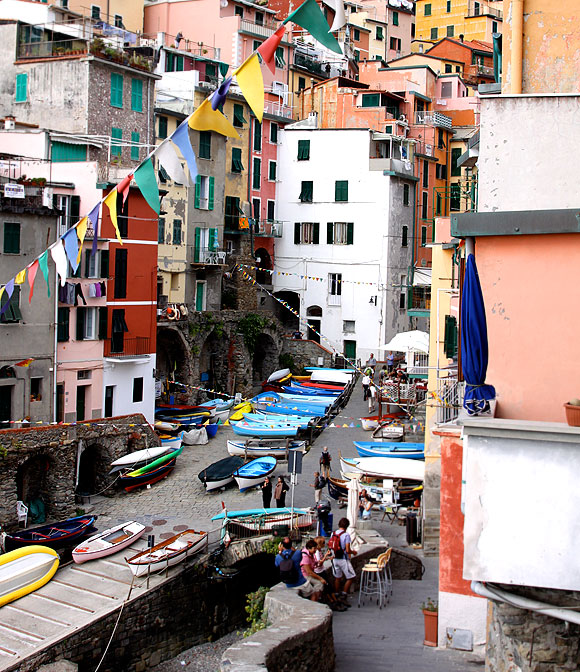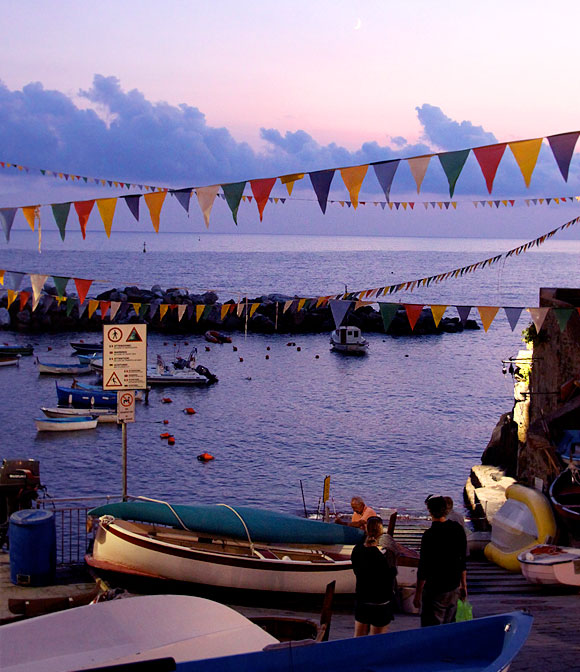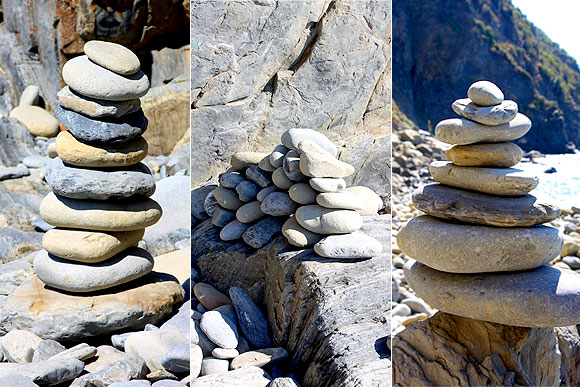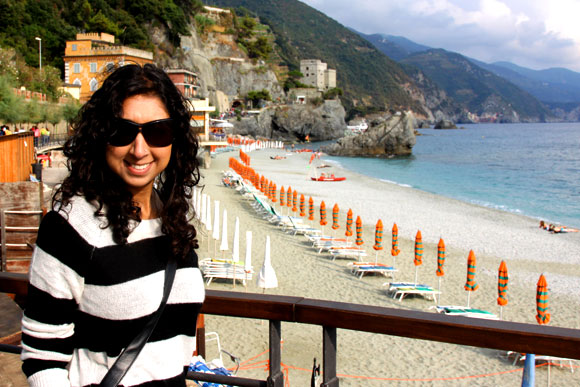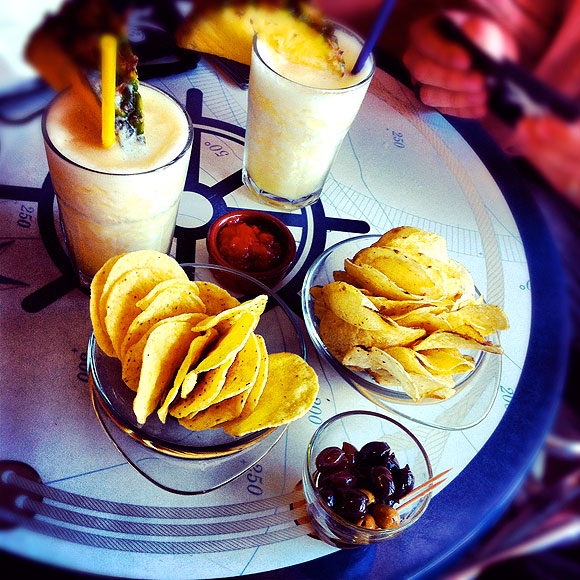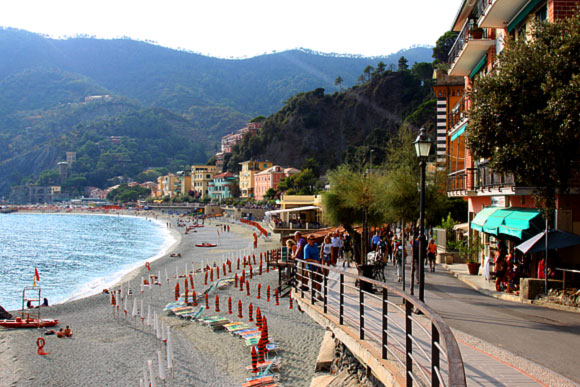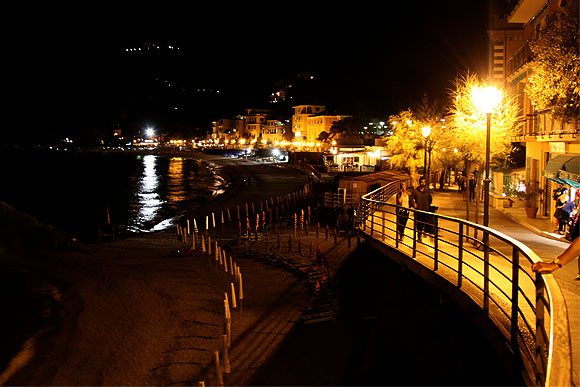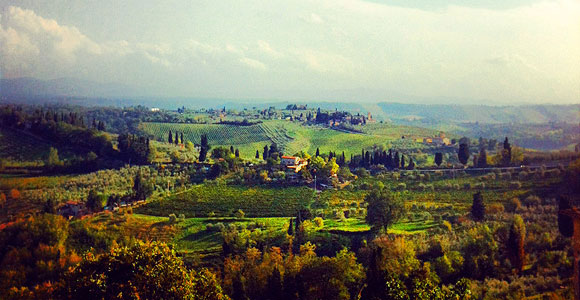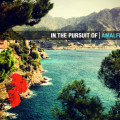Where in the world can you throw snowballs on top of a mountain pass AND visit the sweltering Mediterranean beaches in one day? Italy, that’s where!
After driving an epic 585km from the Stelvio Pass, through the Swiss Alps, (regrettably) past Verona, and down onto the Italian Riviera, we arrive finally at Riomaggiore – the first of the Cinque Terre, or “Five Villages”.
Built into the cliffs, these UNESCO World Heritage listed villages are accessible via footpath, train and boat only – no cars are allowed past the gated access points. If you do intend to visit, make sure you travel light. Without a car you’ll have to tackle the severe inclines of Riomaggiore by foot – and the numerous steep staircases are unforgiving when armed with a full suitcase in each hand! Also, don’t forget that there are no elevators in this part of the world, so stairs are inevitable.
By the time we get to our apartment we have missed the sunset, so its to our great delight when we open the curtains in the morning and are greeted by the most immaculate views! The horizon stretches as far as the eye can see – blue meeting blue in a distant seam stitched across the sky. Two scoops of gelato-coloured buildings are perched on either side of the sea, sitting in cones of rocky terrain – limoncello yellows, peach, and nutella.
We stroll down to Bar Centrale for a morning coffee – the only bar in this small, pedestrian village. It serves as a resource for tourist information (in fact we picked up our keys from here as the owner of the apartment had long gone to bed!), a late-night pizza bar, an early-morning breakfast cafe, and a wifi hub for all.
Caffeine-and-email-fixed, we head down to the marina through the cobbled marketplace. We pass a delicatessen and general store where we later stock up on the staples – fresh bread, real butter, homemade jam, and good Italian beer;
A small shop selling local produce – everything from pasta spices to olive oil, soap to limoncello;
A fruit and vegetable shop with the largest pears I’ve ever seen;
And a gelato stand selling the most heavenly banana-flavoured confection. At the very bottom of the village is the train station, and a tiny bay, with tiny matching waves, sploshing on the foreshore.
The water reminds me of Lake Lucerne, so clear it is I can see the rocks and fish beneath!
Hanging above us are strands of colourful gala flags blowing in the light breeze, mimicking the ripples of the Mediterranean below.
Tucked just around the corner is the rocky beach of Riomaggiore, a hide-a-way cove with gentle waves not big enough for a surf but still “too dangerous for a kayak”, according to the Italians. We settle on a pair of snorkels instead. The sunburnt locals are scattered on the rocks, camouflaged with their Mediterranean tans. You can tell apart the tourists, with their pale, outstretched arms trying to balance on the tumbling pebbles of the shore.
The water is sublime, a comforting cool against my skin in the intense Italian summer, crystal clear and somehow “lighter” than the Pacific – perhaps not as salty? Nevertheless, this is the stuff that dreams are made of. The bluest blue I could ever imagine surrounds me in the sea and sky together; the ocean sparkles in the midday sun; a rowboat bobs across the horizon. Like a postcard brought to life.
Drying off, we listen to the laughter of the Germans and the “WOO”-ing of the Americans, and smile at the token Indian, hiding in the makeshift canopy of a towel, afraid of the sun. I realise my skin is coated in a thin, dusty film of sea salt – but not a single grain of sand. We’re definitely not in Kansas anymore! We walk back past the rock castles and grab some banana and peach gelato, nodding a “buonasera” to the Nonna’s on the way.
That evening, we are spoilt for choice for dinner – in fact, we are spoilt each day when it comes to lunch, afternoon tea, and dinner! We pick a little restaurant overlooking the water and make friends with a local tabby. She makes herself comfortable under our table, while the restaurateur picks at herbs growing on the balcony next to us – something tell me we’ve chosen a good one. 🙂

The food of Riomaggiore centers around local produce, and as a result, is always fresh and cooked to perfection. Above are some of the delicacies we sampled; stuffed clams, spaghetti with olives, almond-crusted salmon, and lobster linguine.
The little restaurant, Enoteca Dau Cila, soon becomes our favourite, for so many reasons. Most notably, the food was the best we had in Cinque Terre – authentic and delicious – albeit a little expensive. But that’s what you get for the quality of the meals, the stunning views, and the exemplary service. I’ve found most tourist destinations to be swarming with money-hungry restaurants, dishing out “tourist quality” fare for “tourist prices”. For example, we found it hard to find a decent restaurant in tourist-packed Monterosso. We dined one night at an establishment that left our wallets empty and our bellies unsatisfied. It’s definitely not easy to know where to go when you don’t speak the language fluently enough to fool the locals.
The one thing I will always remember about the Enoteca dau Cila was our last meal. After settling the bill, our regular waiter bid us a fond farewell, wishing us well on our journey – and offering a shot of Limoncello on the house for each of us… and one for him as well. 🙂 I know I say this about all the people we’ve met so far on our travels, but of all the people in the world, I think I like the Italians the best!

The view from our favourite restaurant, Enoteca Dau Cila in Riomaggiore Marina.
The following day leaves us with some spare time to explore the rest of the villages. One of the more popular activities in Cinque Terre is to walk the pathway between the five villages – but it takes about five hours to complete the Sentiero Azzurro, or the “Light Blue Trail” (not including the time you spend looking around each village), so we instead decide to jump on a ferry to Monterosso, and catch the train back.
Monterosso al Mare is the most popular, more resort-style village of the five, with plenty of shops, bars and restaurants. But the sandy beaches come with a fee; not only do you have to literally pay an entrance fee, but the shore is lined with sharp stones, which makes it too painful to venture into the ocean without proper swimming socks/shoes, and is also teeming with illegal Asian immigrants offering cheap massages. Don’t be tempted however – both the masseur and yourself will cop a hefty fine if you get caught by the authorities, who patrol the beach regularly.
Despite the recent floods, it’s good to see that the village has recovered from the extensive devastation it suffered. Almost a year later, it’s hard to imagine the rubble that once lay across the main drag. The shops have bounced back, the infrastructure re-established, and tourism is booming. We kick back at a small, anonymous, beach-side cocktail bar with a deck of cards, enjoying €5 Pina Coladas served with a side of complimentary potato crisps, olives, corn chips and salsa. The service again is impeccable; friendly and not fussy, and the prices are great value too; our snacks are replenished on the house with each drink we order.
As the sun sets over the beach, we listen to the chatter of a nearby group of Aussie-Italians. They switch seamlessly between the two languages, their perfectly fluent Italian breaking now and again into a very familiar Sydney accent – a sudden, welcome touch of home in this foreign land. At another table sits a couple of locals who obviously know the owners of the establishment. The straightest men I’ve ever seen, these blokes sit down and banter with the barkeep, sipping their umbrella-clad cocktails without a care in the world… only in Italy!
We didn’t get around to visiting the other three villages (you have to leave something for next time, right?), but I can’t imagine how any of the others could possibly trump our little village.
Does beachless Manarola, hilltop Corniglia, or iconic Vernazza stand up to romantic Riomaggiore? We’ll have to go back and find out 🙂
 Enjoyed this post? Read the next post from this series: “A Honeymooner’s Guide to six weeks in Europe” now!
Enjoyed this post? Read the next post from this series: “A Honeymooner’s Guide to six weeks in Europe” now!




